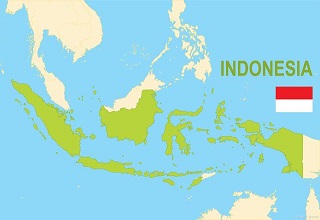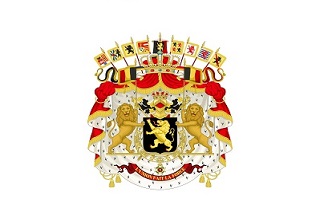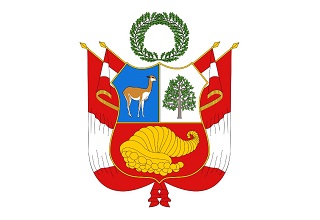Regarding the Inspection and Quarantine Requirements for the Pork from Russia
In accordance with relevant laws and regulations of the People's Republic of China, as well as the provisions on inspection, quarantine, and veterinary health requirements for pork imports from Russia stipulated in the agreement between the General Administration of Customs of the People's Republic of China and the Federal Service for Veterinary and Phytosanitary Surveillance of the Russian Federation, starting from today, pork (including edible pork by-products) that meets the relevant requirements is allowed to be imported from Russia.
I. Inspection and Quarantine Basis
1. Laws and Regulations
Food Safety Law of the People's Republic of China and its Implementing RegulationsThe Law of the People's Republic of China on Entry-Exit Animal and Plant Quarantine and its Implementing Regulations
The Law of the People's Republic of China on Import and Export Commodity Inspection and its Implementing Regulations
The Special Provisions of the State Council on Strengthening the Supervision and Administration of Product Safety such as Food
Administrative Measures for the Safety of Imported and Exported Food
Provisions on the Registration Management of Overseas Manufacturers of Imported Food
2. Bilateral Protocols
Protocol on Inspection, Quarantine, and Veterinary Health Requirements for Pork Imports from Russia to China (hereinafter referred to as 'The Protocol').
II. Products Allowed for Import
The allowed imported pork refers to chilled or frozen bone-in or deboned skeletal muscle.Edible pork by-products that can be imported include: frozen whole/pig trotters, frozen pig hocks, frozen pig tails, unrendered pork fat (excluding fat around internal organs), frozen pig cartilage, frozen pig bones, and frozen pigskin.
Other permissible edible pork offal includes: frozen pig heads (inclusive of frozen pig brains, frozen lower jaws, frozen tongues, frozen ears, frozen noses, and frozen lips) sourced from FMD non-vaccination disease-free zones, frozen pig esophagi, frozen tracheas, frozen hyoid bones, provided they are from FMD free zones.
III. Manufacturer Requirements
Pork producers (including slaughterhouses, processing, cutting, and storage facilities) exporting to China must be located within the territory of the Russian Federation, specifically in Foot-and-Mouth Disease (FMD) non-immunization disease-free zones recognized by both the Chinese side (the General Administration of Customs of the People's Republic of China) and the Russian side (Federal Service for Veterinary and Phytosanitary Surveillance), as well as ASF-free zones or biosafety isolation zones approved by the Russian side, operating under their supervision, and complying with the veterinary health and food safety-related laws and regulations of both China and Russia.Producers intending to export pork to China must be registered with the Chinese side. Only products produced from the date of registration will be eligible for export to China. Pork producers that have not been registered are prohibited from exporting to China.
IV. Inspection and Quarantine Requirements
1. Animal Disease Management1.1 In the past 12 months, classical swine fever has not occurred in Russia, nor have foot-and-mouth disease or Nipah virus ever been reported.
1.2 Pork trade with China is conducted based on World Organisation for Animal Health (WOAH, formerly OIE) rules and recognized FMD-free zones by both China and Russia, as well as agreed-upon ASF quarantine requirements.
2. Conditions for Live Pigs Used in Producing Pork for Export to China
2.1 Born, raised, and slaughtered in FMD-free zones recognized by both countries and ASF-free zones or biosafety isolation areas approved by Russia, with individual identification enabling traceability of their origin.2.2 Originating from farms that have not had clinical cases of anthrax, tuberculosis, pseudorabies, brucellosis, paratuberculosis, porcine reproductive and respiratory syndrome (PRRS), or transmissible gastroenteritis in the preceding 12 months before slaughter, and are free from trichinellosis and cysticercosis infections.
2.3 No live vaccination against anthrax within at least 14 days prior to slaughter.
2.4 Originating from farms/places that have not been under quarantine surveillance or movement restrictions due to other reportable pig diseases not mentioned in the above clauses, as specified by China, Russia, and WOAH, in the past six months.
3. Processing Requirements
3.1 For pigs used in producing pork for export to China:(a) Slaughtered, processed, and stored by enterprises registered with China, with traceable individual identification.
(b) Never treated with veterinary drugs and/or feed additives prohibited for use by the laws and regulations of both countries and/or applicable national standards.
(c) Derived from farms meeting the requirements of the agreed-upon disease-free zones or biosafety isolation areas.
(d) Subjected to pre-slaughter clinical inspection by Russian authorities on an individual basis, confirmed to be free from abnormalities, and sampled for ASF testing with negative results before being transported to the slaughterhouse.
(e) Kept separate from pigs not complying with the Protocol during transportation to the slaughterhouse and within the slaughterhouse, as well as from pigs not belonging to a registered enterprise and from other animals.
(f) Undergo ante-mortem and post-mortem inspections according to current Chinese, Russian laws and regulations and WOAH's Terrestrial Animal Health Code, showing no signs of ASF or other pig diseases. Proving all slaughtered pigs are healthy, free from clinical symptoms of infectious diseases, without pathological changes in carcasses and organs, and having major lymph nodes including submandibular lymph nodes and glandular tissues removed.
(g) Post-slaughter, subjected to Trichinella testing using artificial digestion or other mutually agreed methods, with negative results.
3.2 Implemented Russian national monitoring plans for banned substances and toxic residues, ensuring that residue levels of veterinary drugs, pesticides, heavy metals, persistent organic pollutants (POPs), and other toxic and harmful substances do not exceed maximum residue limits (MRLs) set by both China and Russia.3.3 Implemented Russian national microbiological monitoring plan, ensuring products are free from pathogenic microorganisms contamination and meet the requirements of Chinese and Russian laws and regulations.
3.4 Not processed together with animal products of other species, products derived from animals not complying with the Protocol, products not from this registered enterprise, products not originating from ASF-free zones or biosafety isolation areas, or products not intended for export to China.
3.5 During periods of significant public health emergencies, enterprises implement necessary safety control measures according to international regulations and standards to ensure that pork is not cross-contaminated throughout the processes of receiving raw materials, processing, packaging, storage, and transportation.
3.6 Products comply with veterinary and sanitary requirements stipulated by Chinese and Russian laws and regulations, ensuring they are hygienic, safe, and fit for human consumption.
3.7 Edible pork by-products for export to China must also meet additional processing hygiene requirements outlined in the Protocol.
4. Storage Requirements
A dedicated area should be established and clearly marked in refrigerated or frozen warehouses storing pork for the exclusive storage of pork destined for China.
V. Certificate Requirements
Each container of pork exported to China must be accompanied by at least one original Veterinary Health Certificate certifying that the consignment complies with the relevant provisions of veterinary and public health laws and regulations of both China and Russia, as well as the terms stipulated in the Protocol.
The Veterinary Health Certificate should be written or printed in Chinese or English (with English being mandatory when filling out certificate content). The format and contents of the Veterinary Health Certificate must be approved by both parties in advance.
The Russian side shall provide the Chinese side with official inspection and quarantine/control seals and marks, a sample of the Veterinary Health Certificate, a list of authorized signing veterinarians along with their signature specimens, instructions on anti-counterfeiting features, the name of the email address for sending electronic certificates or details of the electronic health certificate system (if applicable). Electronic copies of certificates should be sent to the Chinese side via designated channels before the arrival of the goods. Any changes or alternations should be notified to the Chinese side at least one month in advance.
The Russian side shall promptly transmit the electronic information of issued Veterinary Health Certificates through official channels to the Chinese side for verification during import. The Russian side must ensure the security and accuracy of the electronic information.
VI. Packaging, Storage, Transportation, and Labeling Requirements
Pork exported to China must be packaged using food contact materials compliant with the requirements of Russian and Chinese laws and regulations. Transportation vehicles must be thoroughly disinfected using officially approved effective disinfectants. Each package of pork destined for China should have separate inner packaging labeled in Chinese and Russian, or Chinese and English, with product name (description), country of origin, registration number of the producing enterprise, and production batch number. The outer packaging should bear, in Chinese and Russian, or Chinese and English, information including the country of origin, product name, specifications, origin (specific to federal subject/city), producer's registration number, production batch number, destination (clearly stated as the People's Republic of China), production date (year/month/day), expiration date, storage temperature, and must also affix (stick or print) the Russian official inspection and quarantine marks approved and registered with the Chinese side. Prepackaged pork must also comply with Chinese laws, regulations, and standards regarding prepackaged food labeling. The registration number of a Russian enterprise in the Federal Government Information System for Veterinary Affairs demonstrates that the enterprise and its products are under Russian official supervision.
Throughout the entire process from packaging to storage and transportation, pork exported to China must adhere to the relevant hygiene requirements of Chinese and Russian laws and regulations, ensuring no contact with African Swine Fever virus from any source and preventing contamination by pathogens and toxic and harmful substances. Pork storage and transportation should take place under appropriate temperature conditions; the core temperature of frozen pork products should not exceed -15℃, while chilled pork should maintain a core temperature below 4℃.
After loading into containers (for sea or air transport), the shipment should be sealed under the supervision of Russian officials, and the seal number must be indicated on the Veterinary Health Certificate. Packages must not be opened or changed during transportation. No mixed cargo from different shippers and consignees, or other goods, can be loaded in the same container.
This Announcement hereby serves as notification.
General Administration of Customs of the People's Republic of China
January 24th, 2024




